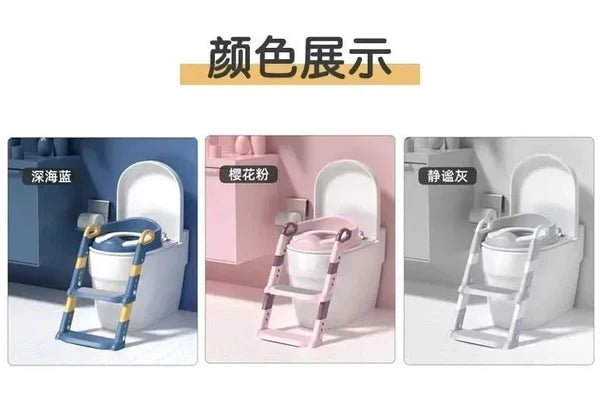
The Ultimate Guide to Choosing a Children’s Toilet Seat – What Every Parent Should Know.
Share
Introduction: Transition Time Just Got Easier
One of the biggest parenting challenges is navigating the transition from diapers to toilet. And while every child’s journey is different, one tool that consistently makes a difference is a children’s toilet seat.
It’s more than just a cute accessory—it’s a confidence-building, mess-reducing, stress-easing device that supports your child as they take one of their biggest developmental steps.
Let’s dive into what makes a great toddler toilet seat, when to introduce it, and how to turn bathroom time into a successful daily routine.
Why Not Just Use a Potty Chair?
Potty chairs are fine for the first few steps—but they create an extra hurdle: transitioning from the potty to the big toilet.
That’s where a children’s toilet seat shines. It:
- Introduces real toilet use early
- Eliminates the second round of training
- Helps kids feel more like grown-ups
- Reduces bathroom clutter
You’re not teaching your child to potty twice—you’re helping them master the real thing from day one.
Features to Look For in a Children’s Toilet Seat
-
Secure Fit
The seat should stay put without sliding or shifting. Look for rubber grips or adjustable locking systems. -
Comfort
A padded seat or ergonomic design helps children relax and sit longer. -
Splash Guard
Especially important for boys—no explanation needed! -
Ease of Cleaning
Seamless designs and wipe-clean materials save time and hassle. -
Compact or Foldable
If space is limited—or if you travel often—a foldable seat makes things easier.
When to Make the Switch from Diaper to Toilet Seat
Start when your child:
- Shows interest in the toilet
- Can communicate basic needs
- Demonstrates physical control (staying dry for 2+ hours)
Many children start around age 2 to 3, but readiness is key. Don’t rush it—and don’t compare your child to others.
Helping Your Child Adjust to the Seat
- Let them explore the seat before using it
- Make it part of your routine (before bath or after meals)
- Use positive reinforcement (“Wow! Big kid potty!”)
- Let them flush or wash hands as a reward
The more control they feel, the more motivated they’ll be.
Children’s Toilet Seat vs. Potty Chair – A Quick Comparison
| Feature | Toilet Seat Insert | Potty Chair |
|---|---|---|
| Training on actual toilet? | ✅ Yes | ❌ No |
| Easy cleanup | ✅ Yes (flushable) | ❌ Requires dumping |
| Portable/travel-friendly | ✅ Often foldable | ❌ Bulky to carry |
| Encourages transition | ✅ Directly | ❌ Delayed switch needed |
What Parents Are Saying
“We tried a regular potty chair at first, but my son wouldn’t use it. The toilet seat made him feel more grown-up.”
“Easy to clean, no mess, and fits perfectly on our toilet. Total game changer!”
“We bring it on vacations. My daughter has no problem using hotel toilets now.”
Maintaining Hygiene and Safety
- Wipe down daily with a child-safe cleaner
- Store upright or in a sanitary bag when not in use
- Avoid loose-fitting seats that could slip
Some toilet seats even come with carrying bags or wall hooks for convenient storage.
Traveling? Bring the Seat With You!
Public toilets can be intimidating. A familiar seat:
- Keeps routines consistent
- Reduces resistance or accidents
- Gives your child confidence—even on the road
Pack it in your suitcase or diaper bag and keep potty progress on track.
Conclusion: Your Potty Training Partner
A children’s toilet seat is more than a tool—it’s a companion in your child’s potty journey. It bridges the gap between diapers and independence, offering safety, familiarity, and a lot less cleanup.
So whether you’re just starting or looking to improve your current setup, invest in a seat that supports your little one—every step of the way.
